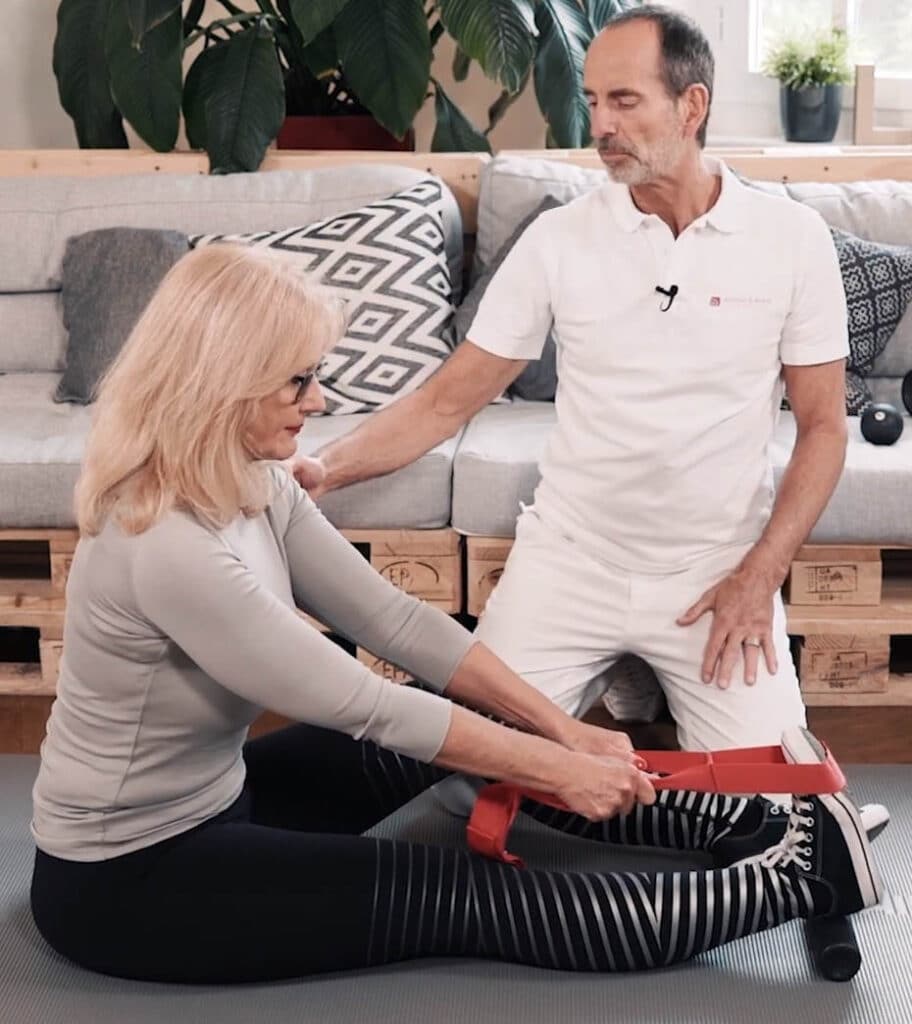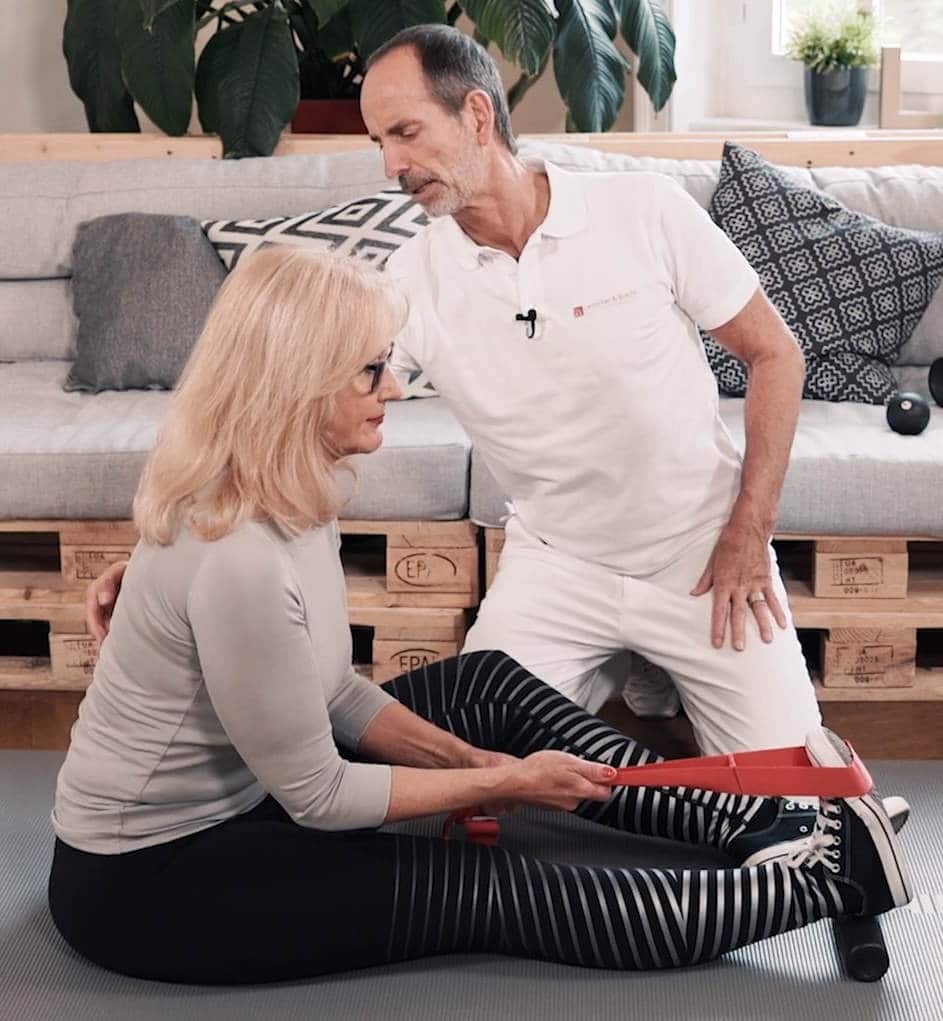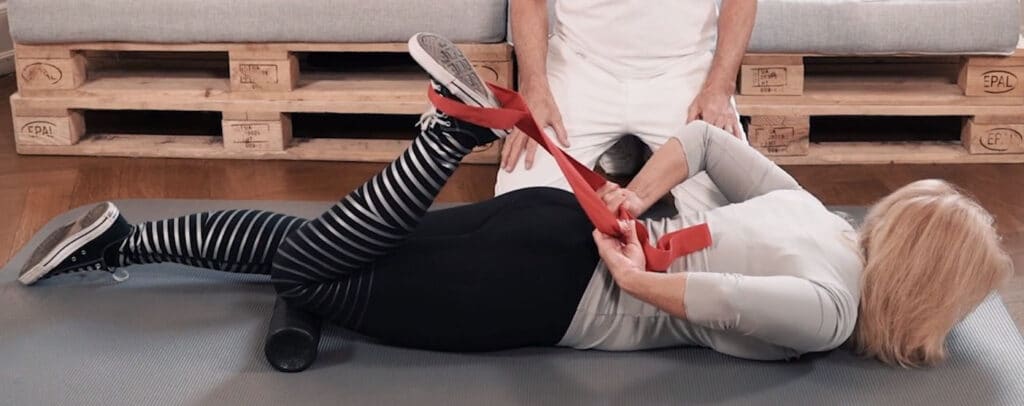Knee Pain
Foam Roller knee stretches
Body Part:
Knee
Equipment:
Stretching Strap, Foam Roller
Level:
Intermediate
Knee Pain
Body Part:
Knee
Equipment:
Stretching Strap, Foam Roller
Level:
Intermediate
When your knees hurt, it doesn’t matter much whether it’s meniscus problems or damaged ligaments, you still have knee pain. With knee pain, many people imagine that something must be broken, and that’s why it hurts. But that’s hardly ever the case. In fact, it’s almost always too much tension on your muscles or fasciae responsible for the pain. So if we can neutralise that tension, your knee pain is likely to disappear, or at least subside to a significant extent.
That’s where the Liebscher & Bracht pain therapy comes in. We developed a tripartite system to treat pain. Using osteopressure, we can reduce acute pain instantly. Additionally, foam rolling massages and special stretches help to achieve long-term relief to prevent further damage and discomfort — if you do the exercises regularly.
So here are two foam rolling exercises for knee pain which address that specific pain issue.

Sign up for our free newsletter and discover how to manage your pain yourself. Every two weeks, we’ll deliver follow-along videos and articles to your inbox.

For our first exercise, you’ll need to sit down on the floor with your legs straight. Then you should use our stretching strap – or a towel, belt, or something similar if you don’t have one.
Taking the smaller loop at the end of the strap, just put it around your foot on the leg where you have knee pain. Not around your toes (because they may not take the strain) but around your toe joints, so they can be pulled back towards you. It’s also helpful to wear shoes with a good sole which can grip the strap and allow you to pull.
Now, holding the strap tight, straighten your leg to lock your knee. When you do that, your heel lifts a little bit off the floor. Just enough to easily slide our mini foam roller underneath to support that heel.

Still gripping the strap, sit up straight with your arms well out in front. Then straighten and arch your lower back as much as you can. Now pull your foot as much as possible, at which point you should feel a good stretch in your calf muscle. Pull back even more, always keeping your back straight, and trying not to let your elbows bend too much. Hold this stretch for 30-45 seconds.
After about a minute, still keeping up all the pull pressure, try to move your hips forward while still keeping your shoulders upright and your back absolutely straight. Now focus on the stretching pain in the hollow of your knee.
At this point, it helps to visualize that pain as hot water, which – for two and a half minutes – you will allow to flow out of your knee. Keep your posture straight while you sustain that pull pressure. Then, once the time is up, slowly release the pressure. Your first exercise is done and should have made a noticeable difference to your pain level. Good job!

This second foam rolling exercise for knee pain will now focus on the front of your knee. You’ll need to lie on your stomach this time. But first, you’ll need to use our midi foam roller to support your knee, and a stretching strap for pulling. If you don’t have a foam roller yet, you could use something like a couple of books to raise your knee up off the floor.
So, slide the roller under your knee, and lie down on your front. Now, bending your leg at the knee, place the smaller loop around your foot ready to pull. The main reason you need a stretching strap, or something similar, is so you can easily pull and stretch your knee – but without lifting your groin from the floor. This is important because it ensures the stretch will include a muscle we wish to target that runs along your hip.
Now go for the stretch, and keep pulling for between two and two and a half minutes. Then, when that time is up, slowly release the pressure, get back on your feet, and you’re done!
If you keep doing these two foam rolling exercises for knee pain regularly, you should find your knee pain is much reduced, and may even disappear for good.

Sign up for our free newsletter and discover how to manage your pain yourself. Every two weeks, we’ll deliver follow-along videos and articles to your inbox.
Then we would be happy if you shared it with your friends: